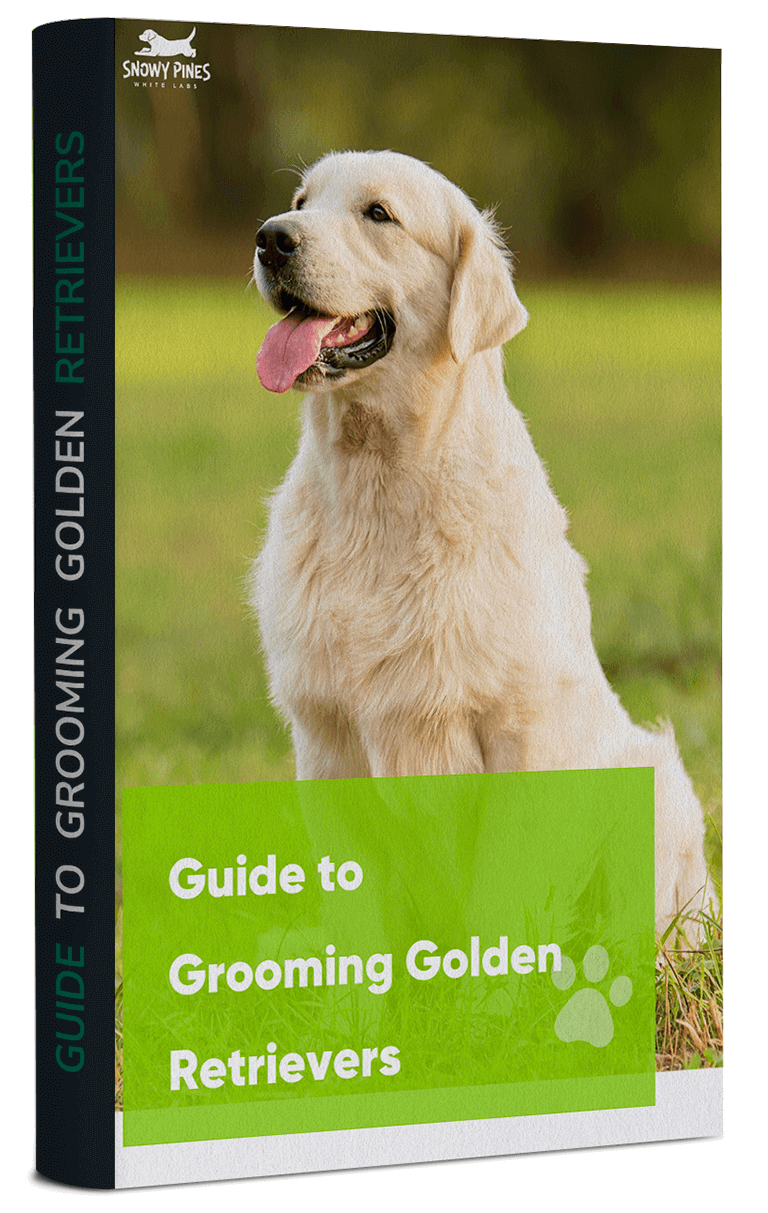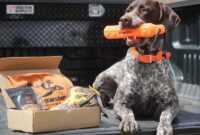Retriever Dog Guide – This post may contain affiliate links. We may earn money or products from companies mentioned in this post.
In my eleven years as a guide dog handler, I’ve become accustomed to being the poster child for service animal etiquette and “Guide Dog 101.” The questions I get run the gamut from curious to amusing. (No, my dog doesn’t read street signs, for example. Because you were asking).
Retriever Dog Guide

Guiding Eyes for the Blind reports that about 2% of the blind population in the United States has a guide dog, so these questions aren’t all that surprising given how rarely people get on a working team.
Golden Retriever Grooming Guide: Tools & Techniques
After working with two Labradors, the most common question I get is why Labs are so often chosen as guide dogs. Although there are many breeds of dogs commonly trained for service, Labs currently rank as the most popular breed for guide work.
This article will cover the history of guide dogs, guide dog training and what makes Labs the best breed for the job. We’ll also talk about how you can get involved in raising, training and supporting guide dogs.
Quick Tip: We read a lot of books and magazines about Labrador Retrievers. One of our favorites, Your Labrador Retriever Puppy is a great resource for all Lab owners.
The official journey of the guide dog began after the First World War, when many wounded soldiers returned from the front lines blinded by poison gas.
Guide Dog Puppy In Training (golden Retriever/yellow Lab Mix Stock Photo
German doctor, Dr. Gerhard Stalling discovered while treating veterans that dogs could be trained to help the blind. When he was called away from a patient one day, Dr. Stalling left his dog with the patient and upon returning saw signs that the dog was caring for the patient.
In 1916, Stalling founded the first guide dog training school in Oldenburg, Germany. The school trained military and civilians from all over Germany as well as Britain, France, Italy and the United States.
In 1929, Dorothy Eustis, an American dog trainer for the military, police and customs authorities, founded America’s oldest guide dog school, The Seeing Eye in Morristown, New Jersey.

Guide dog schools around the world today are working to improve the independence of the blind, breeding and training dogs to find seats on buses to guide their drivers through snowstorms.
How To Adopt A Retired Guide Dog
The most common breeds you will see as guide dogs are German Shepherds, Golden Retrievers, Labrador Retrievers, and Golden/Labrador crosses. These large breed dogs have the ability and size to comfortably walk alongside humans, maneuver around obstacles, and occasionally put their bodies between their handlers and obstacles such as speeding cars.
While each breed has its advantages, Guide Dogs of America reports that Labs are the most popular breed in guide dog schools around the world. The Lab’s quick wit, high energy, loyalty, and willingness to please lend themselves well to a working lifestyle. Their natural curiosity can turn a trip to the grocery store or a daily commute into an adventure.
I have often compared my Lab to an enthusiastic child; He wants to show me everything, which means I get a lot of sensory information about my surroundings by watching his body language.
When we approach obstacles, whether it’s an open door, a parked car, or a trash can, he usually stops in front of the obstacle and nudges me with his nose, as if to say, “I’m going to let you go. Know that.” This is here so you don’t find it weird when I randomly go off track.
File:guide Dogs Golden Retriever.jpg
The Lab’s affectionate nature makes bonding with the handler easier, which is especially important when the trainer first hands the dog over to its new handler. This transfer of loyalty is a key component in the working relationship of a guide dog team because the dog’s loyalty increases its willingness to work with and for the handler.
Becoming a guide dog is a lifelong training process that begins in the early puppy stage. Dogs are specially bred in facilities that train them, and between seven and eight weeks they are placed with puppy raisers. Breeders can be families, single adults, couples or seniors who volunteer to take puppies into their homes for a period of 12 to eighteen months.
Breeders raise puppies in loving homes, attend basic obedience classes and travel with dogs in public places such as malls, supermarkets and public transport. Puppies wear a vest or jacket, instead of the harness they will use as a working guide, which indicates they are in training, allowing them to go into public places.

At the end of the breeding period, the puppies are returned to the school and handed over to the trainer after undergoing a health check.
Guide Dog Wears A White Harness With Long Handle. Golden Retriever With White Harness Isolated On White Background. Stock Illustration
For the next four months, trainers train the puppies in guide work. Puppies learn directional commands (such as left, right and forward) as well as how to point to objects, find seats on doors, buses or elevators. They learn to stop for elevation changes (sightpaths, broken sidewalks or stairs), guide their handlers on a straight path, and stop for overhanging obstacles.
The latter is one reason why the Lab’s willingness to show restraint to the handler is an important part of team communication. Blind people don’t always know why a dog has stopped or gone out of the way, so we learn to look, reach out to feel what’s in front of us.
If my Lab stops against an overhead obstacle like a tree branch, it usually stops close enough to allow me to reach out and touch it, at which point I duck under it or command it to “find its way.” am
When you hear this command, you can walk on the grass or even on the street as long as there is no oncoming traffic. Since I tell him to “find his way,” he knows that once we clear the obstacle, he must return to the pavement and resume our straight line of travel.
Labrador Retriever Guide
Once the puppies complete their training, they are matched with a blind person who applied for the program. Matches are made based on a variety of factors, including lifestyle and activity level.
For example, if a blind person states in their application that they live in Manhattan and work on the subway, they will be compared to a dog that does well in a fast-paced urban environment. If you live in a small town and walk to work in a heavily wooded neighborhood, you will be matched with a dog that can do well in an area with few or no sidewalks.
During the class period, which typically lasts about 26 days, new handlers work closely with their dogs and trainers, learning various commands and working their dogs in areas ranging from shopping malls to train stations. They learn to travel safely through busy downtown streets and winding roads, and most importantly, they learn to trust their dog.
“Trust your dog” is probably the most overused mantra in training because, while guide dogs sometimes test handlers like precocious children, they also sometimes intelligently disobey handlers to protect them.
A Female Guide Dog Trainer Walks A Golden Retriever Outside On A Sunny Day, London, Uk Stock Photo
Example: Imagine you are standing on a busy street corner and it seems like you have everything for free. You command your dog, “Go forward,” but the dog doesn’t move. Next thing you know, the dog is clawing at your leg, blocking your body with it, and pushing you off the curb at the speed of a car speeding out of nowhere.
This is where the Lab’s sense of loyalty comes into play most effectively because he knows he is your first line of defense against danger.
After training, handlers return home with their dogs and undergo an additional post-training period that lasts up to two weeks.
During this time, the school sends a trainer to the handler’s home and makes sure the team is suitable for the environment they will be working in: office, school, local mall they frequent, etc.
Wonderful’ Dog Who Fathered More Than 300 Puppies For Guide Dogs Retires
This is just the beginning of a lifelong journey of teamwork and training as dog and handler will always learn new ways and explore new territories together.
There are many ways to support guide dog programs and different levels of commitment, all of which play their part. As we have already discussed, you can approach any training center to learn how to become a puppy raiser.
The National Federation of the Blind maintains a list of guide dog schools across the country, which you can find here. Even if you don’t live in the area near the school, most schools have field representatives around the country who can help you with the parenting process.

You can also join the waiting list to adopt a retired or released dog. At the end of a working guide’s “career,” usually about seven to ten years, many handlers choose to keep them as pets or have a friend or family member adopt the dog. When this is not possible, the school ensures that the dog finds a loving home.
Diet Of A Golden Retriever
Dogs are frequent
Labrador retriever guide dog, labrador retriever guide dog breeds, dog retriever training, guide dog golden retriever, retriever dog treats, golden retriever dog insurance, golden retriever service dog, retriever dog, retriever canned dog food, golden retriever blind guide dog, golden retriever dog food, labrador retriever dog food
- Search Rescue Dogs - July 29, 2024
- Police Dog Training - July 25, 2024
- Pointing Dog Training - July 25, 2024




